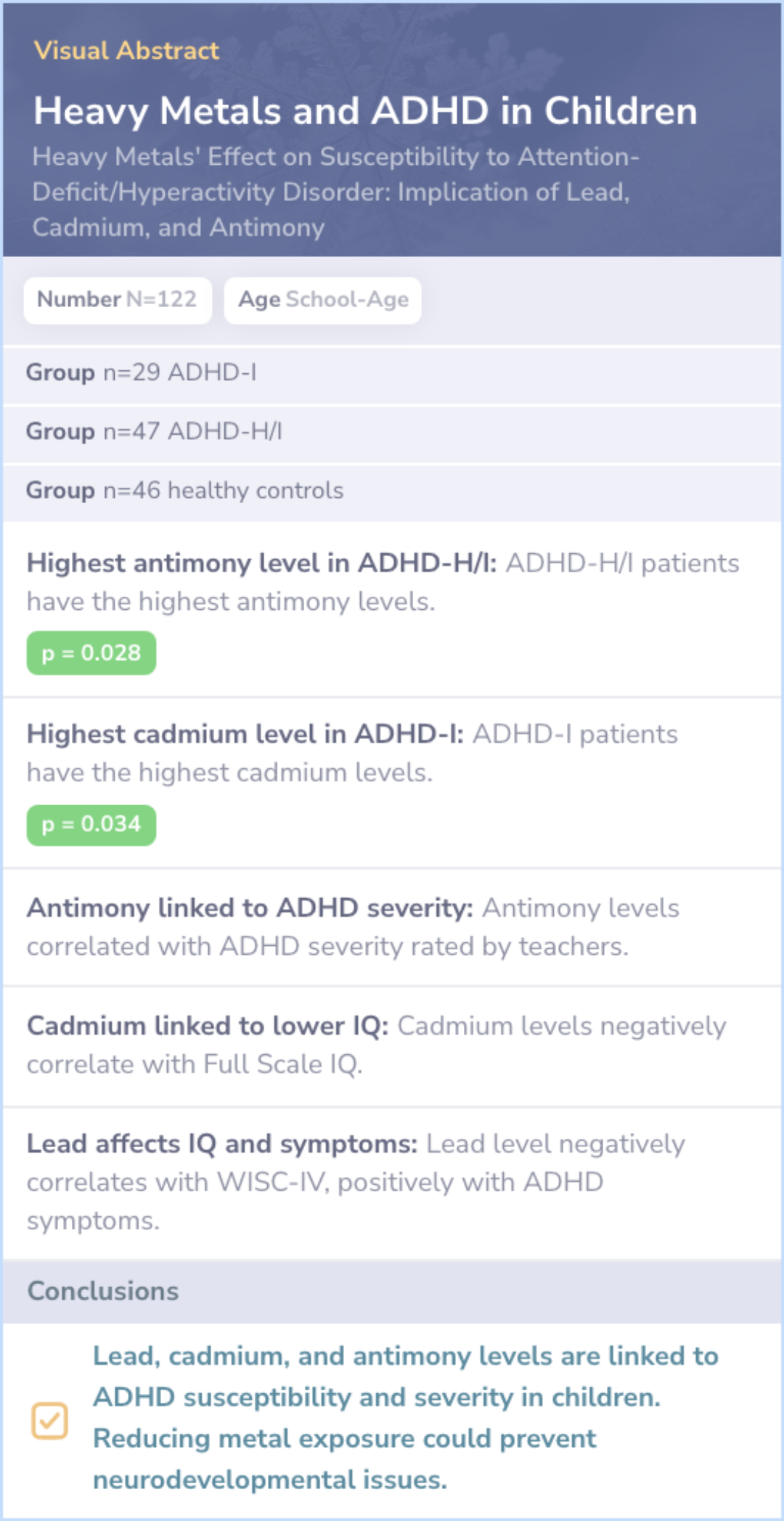Trending ADHD Papers
Visual Abstract
Association between heavy metals exposure and risk of attention deficit hyperactivity disorder (ADHD) in children: a systematic review and meta-analysis
Heavy metals and ADHD risk in children
December 9, 2024
author
Gu Q, Liu J, Zhang X, Huang A, Yu X, Wu K, Huang Y
journal
Eur Child Adolesc Psychiatry
Date Published
2024 Aug 10
Why link to a visual abstract?
What is a visual abstract?
Original
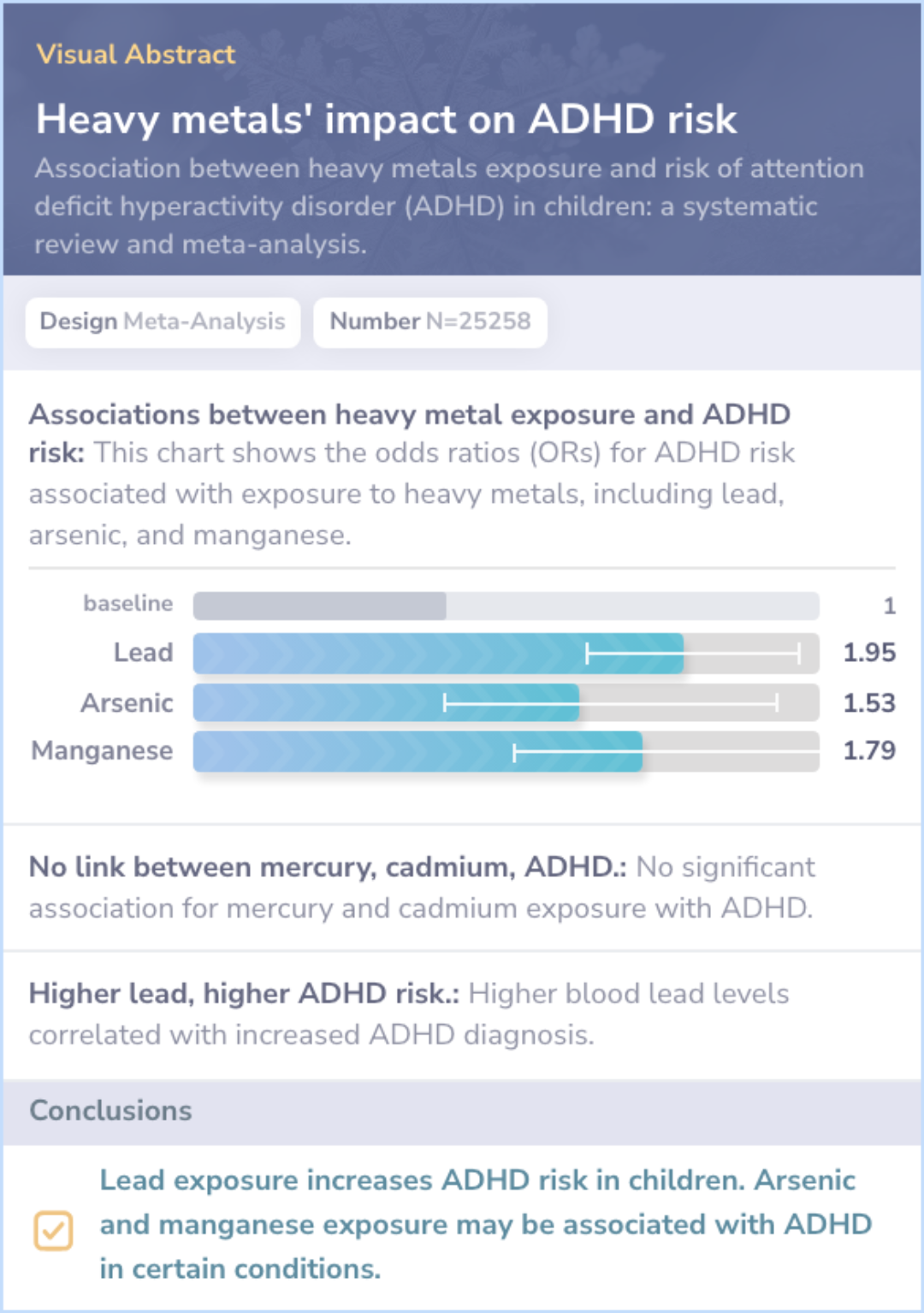
Study Summary
🔬
What They Studied
The study investigated the relationship between exposure to heavy metals and the risk of ADHD in children.
💡
What They Found
The study found that lead exposure increased ADHD risk in children, and arsenic and manganese also showed positive associations with ADHD risk in specific scenarios.
📚
What This Means
These findings suggest that heavy metal exposure, like lead, consistently increases ADHD risk in children, adding to our understanding of environmental factors in comparison to medication effects from other studies.
Study Overview
Background & Objectives
Exposure to heavy metals poses a threat to children's health, especially impacting their neurodevelopment. This study explores how exposure to five common heavy metals influences the risk of attention deficit hyperactivity disorder (ADHD) in children.
Specifically, researchers investigate potential connections between lead, arsenic, mercury, cadmium, and manganese exposure with neurodevelopmental issues and ADHD susceptibility among young individuals.
Specifically, researchers investigate potential connections between lead, arsenic, mercury, cadmium, and manganese exposure with neurodevelopmental issues and ADHD susceptibility among young individuals.
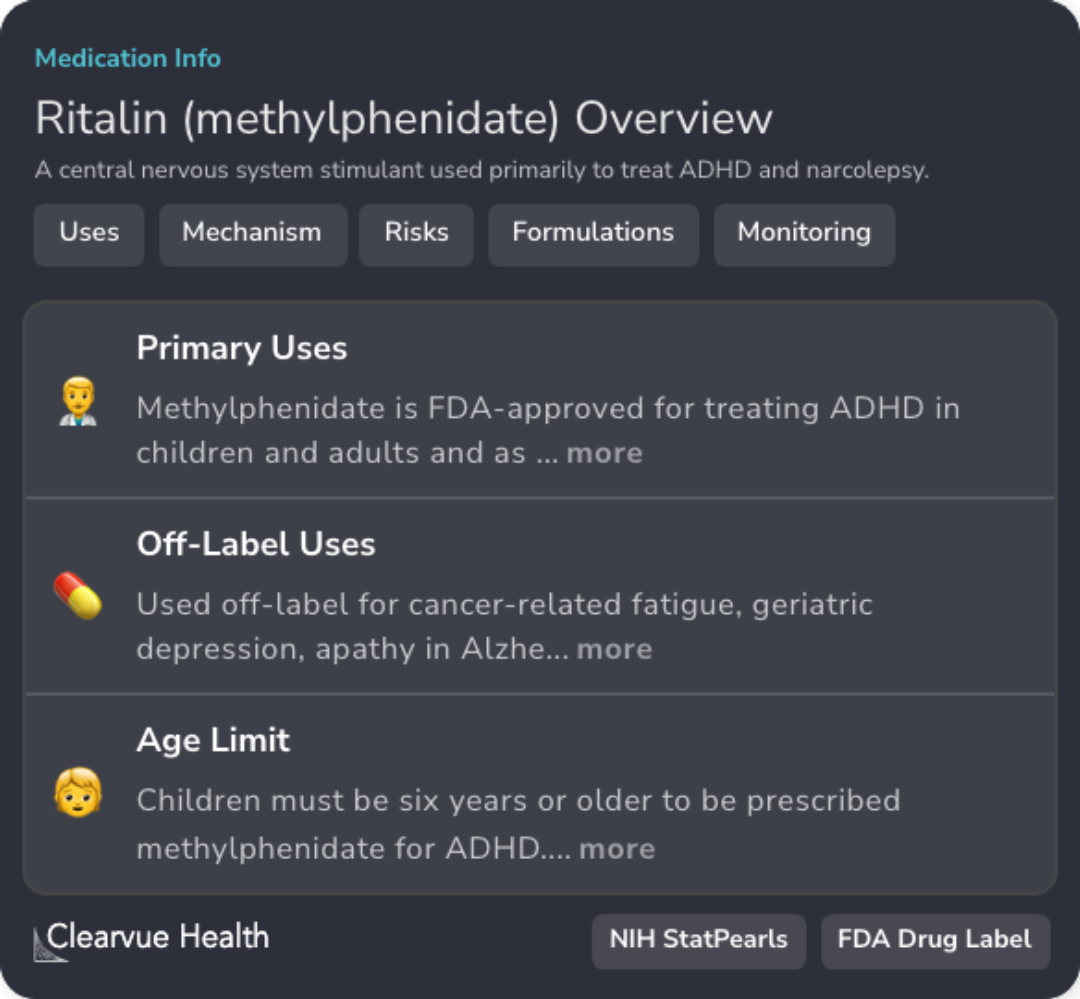
Abstract: background
Heavy metals can negatively affect children's neurodevelopment, yet the relationship between heavy metals exposure and attention defici...more
Study Summary
Methods
Researchers conducted an exhaustive search of online medical databases including PubMed and Embase up to February 2024. They evaluated data from 31 studies involving over 25,000 children, synthesizing diverse findings.
The team systematically reviewed and analyzed these studies to identify any significant patterns or correlations between metal exposure and ADHD risk. Such methods ensure robust conclusions on widespread public health concerns.
The team systematically reviewed and analyzed these studies to identify any significant patterns or correlations between metal exposure and ADHD risk. Such methods ensure robust conclusions on widespread public health concerns.

Abstract: methods
Online databases of PubMed, Web of Science, and Embase were searched before February 29, 2024. A total of 31 studies involving 25,258 c...more
Study Results
Results
Lead was found to have a strong link to ADHD, particularly in studies from the Americas. Arsenic and manganese also showed potential links to ADHD when specific studies were excluded, suggesting certain environmental factors matter.
Manganese and arsenic's association seemed pronounced in regions adjusted for smoke exposure. Mercury and cadmium showed no link to ADHD. Increasing lead in blood was tied to higher ADHD risk, illustrating potential health impacts in various settings.
Manganese and arsenic's association seemed pronounced in regions adjusted for smoke exposure. Mercury and cadmium showed no link to ADHD. Increasing lead in blood was tied to higher ADHD risk, illustrating potential health impacts in various settings.
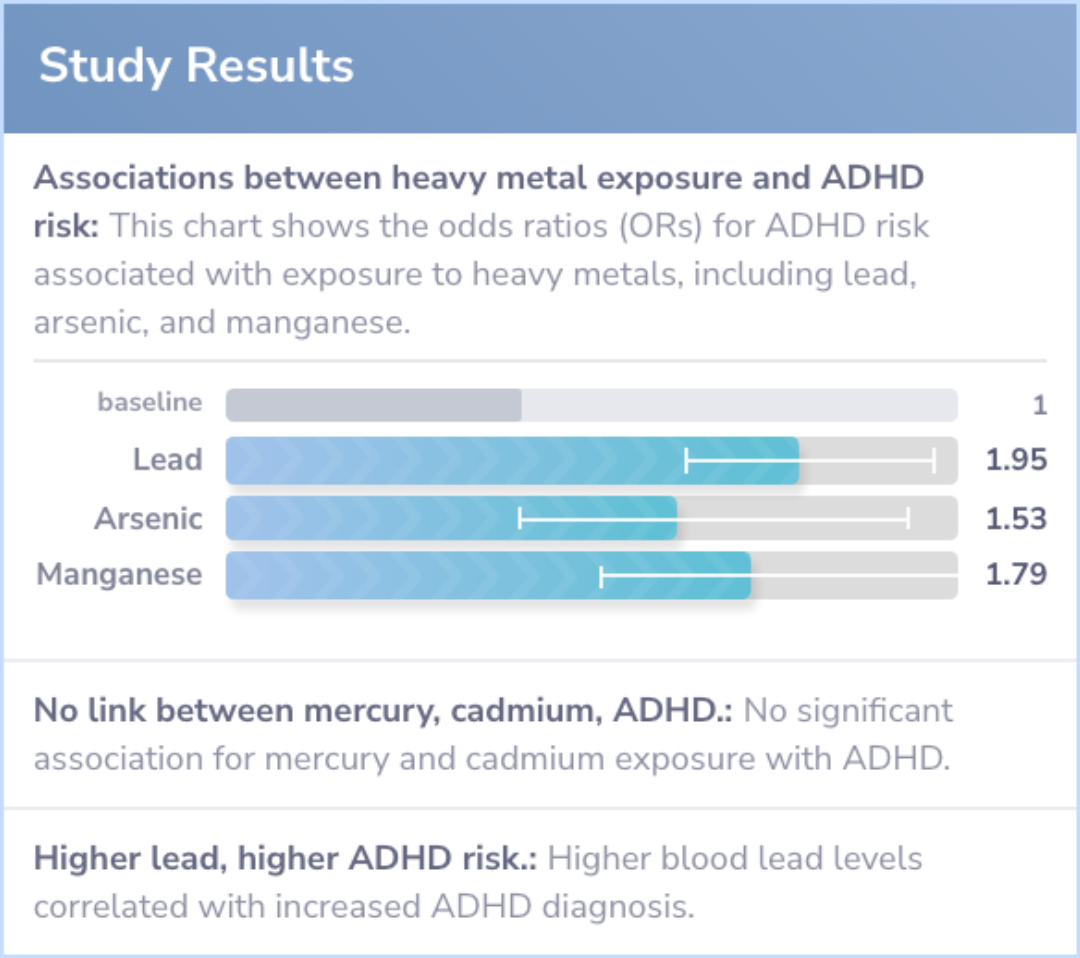
Abstract: results
Our findings revealed that lead exposure was positively associated with ADHD risk in children (OR = 1.95, 95% CI: 1.57-2.41) overall, w...more
Study Summary
Conclusions
Strong associations between lead exposure and ADHD risk suggest heavy metal pollution could be a contributing factor to the condition in children. Arsenic and manganese might play a role depending on the setting, pointing to an intricate relationship.
Ongoing research is vital to assess how these metals affect ADHD, especially in areas with lower contamination. This can help guide public health policies and interventions to protect child development worldwide.
Ongoing research is vital to assess how these metals affect ADHD, especially in areas with lower contamination. This can help guide public health policies and interventions to protect child development worldwide.
Abstract: conclusions
Lead exposure consistently increases the risk of ADHD in children, while arsenic and manganese exposure may be associated with ADHD under different occasions. More research is required to understand heavy metals' impact on ADHD across varying exposur...more
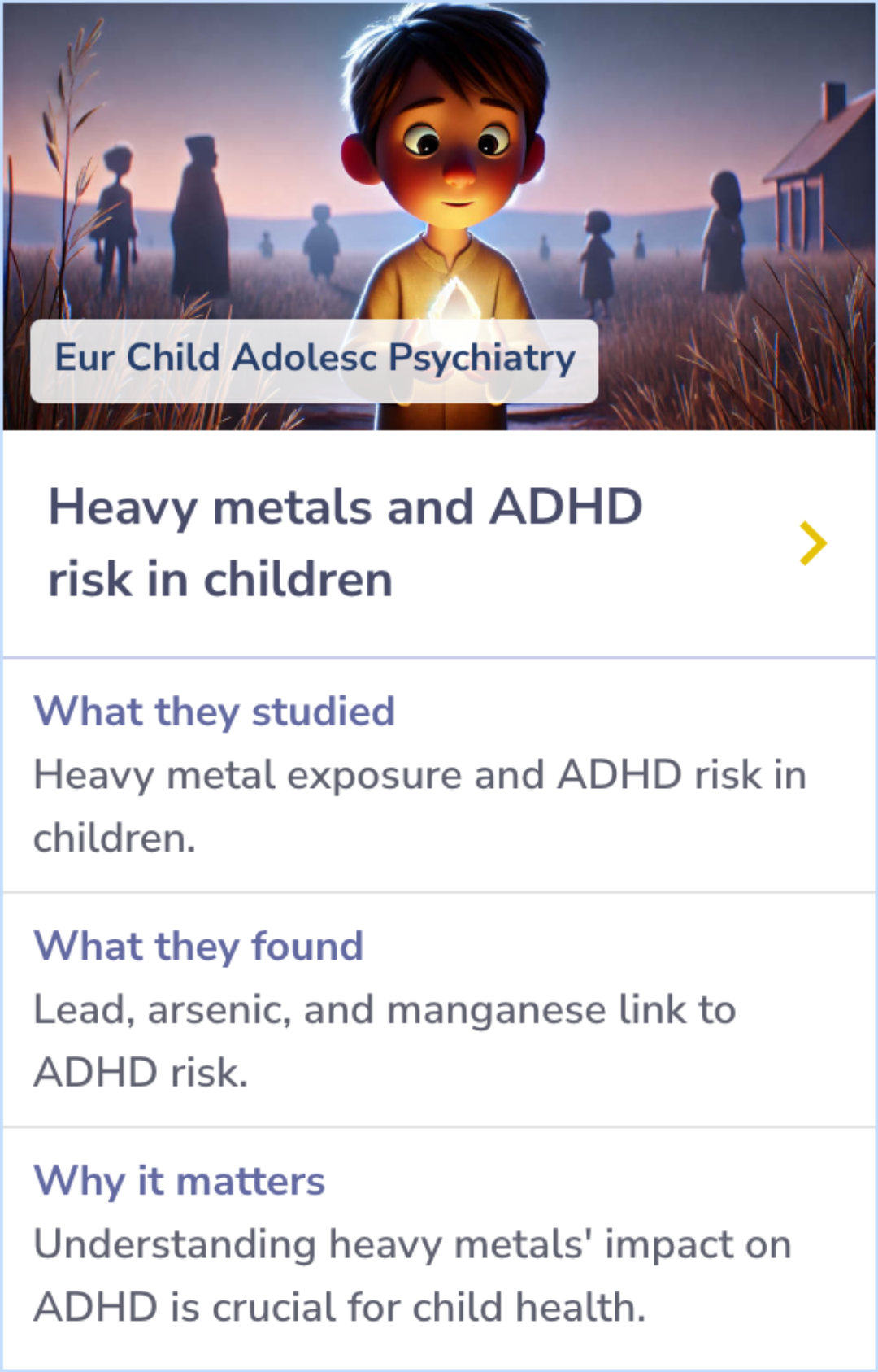
Clinical Guidelines
Guidelines suggest that ADHD evaluations should screen for comorbid conditions like anxiety and autism spectrum disorders.
Environmental exposures, including lead, should be part of the psychosocial history.
Management of ADHD benefits from family-school partnerships.
Environmental exposures, including lead, should be part of the psychosocial history.
Management of ADHD benefits from family-school partnerships.
Literature Review
Skogheim et al, 2021
Core Insight:Both studies examine the effects of heavy metals on ADHD, with the main paper focusing on child exposure and the comparison paper on prenatal exposure.
What It Adds:
Prenatal Exposure: The comparison paper highlights prenatal exposure risks, expanding the understanding of metal impact from child to prenatal stages.
Broader Metal Spectrum: This paper investigates additional metals like copper and zinc, broadening the metal scope compared to the main paper.
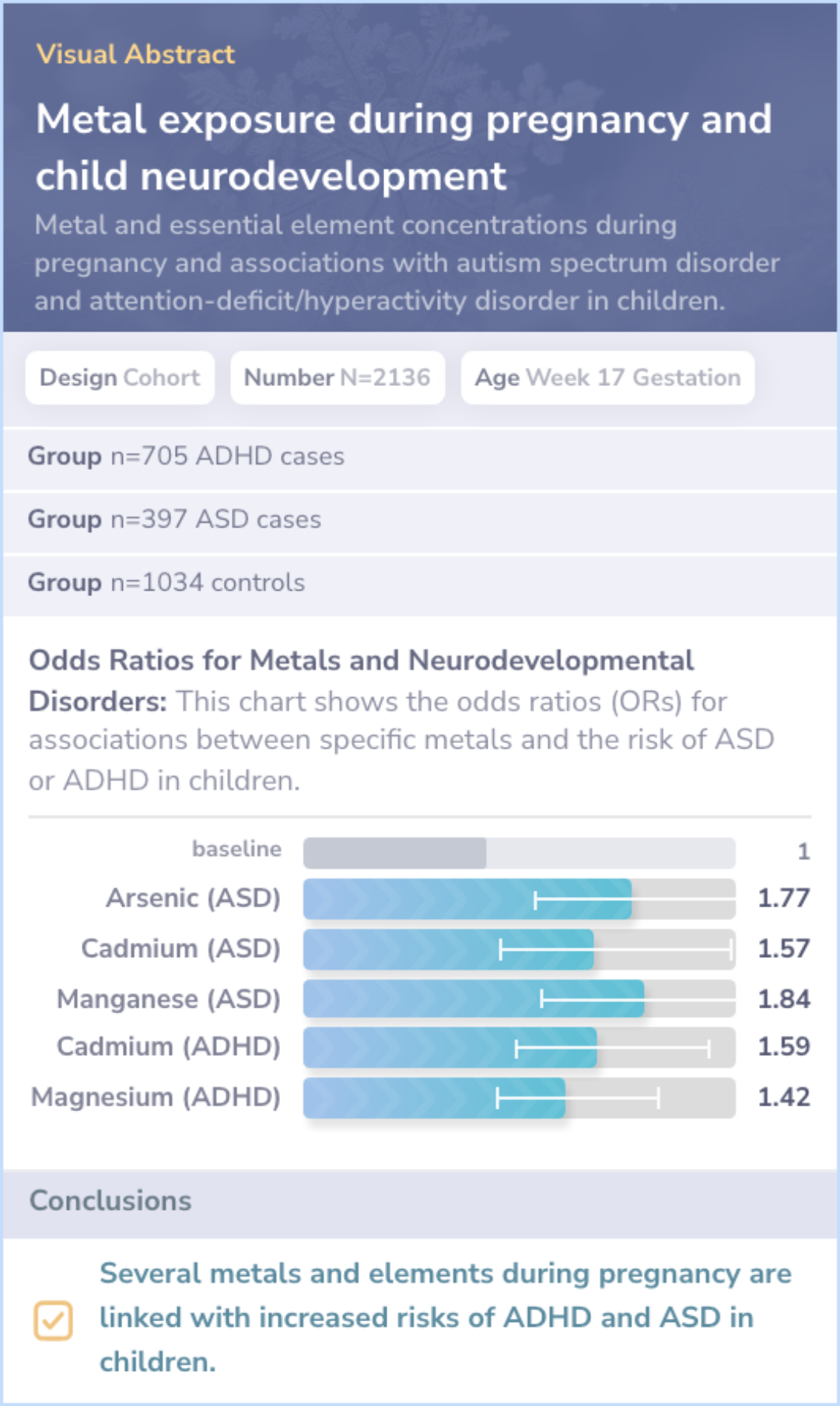
Literature Review
[Ding] et al, [2023]
Core Insight:While the primary paper explores the link between lead, arsenic, mercury, cadmium, manganese, and ADHD, the comparison paper focuses on cadmium, lead, arsenic, mercury, and Autistic Disorder, examining metal concentrations in blood, hair, and urine.
What It Adds:
Geographical Differences: Comparison paper highlights regional differences in metal levels, notably higher in North American controls.
Shared Findings: Both papers find lead and arsenic relate to neurodevelopmental conditions.
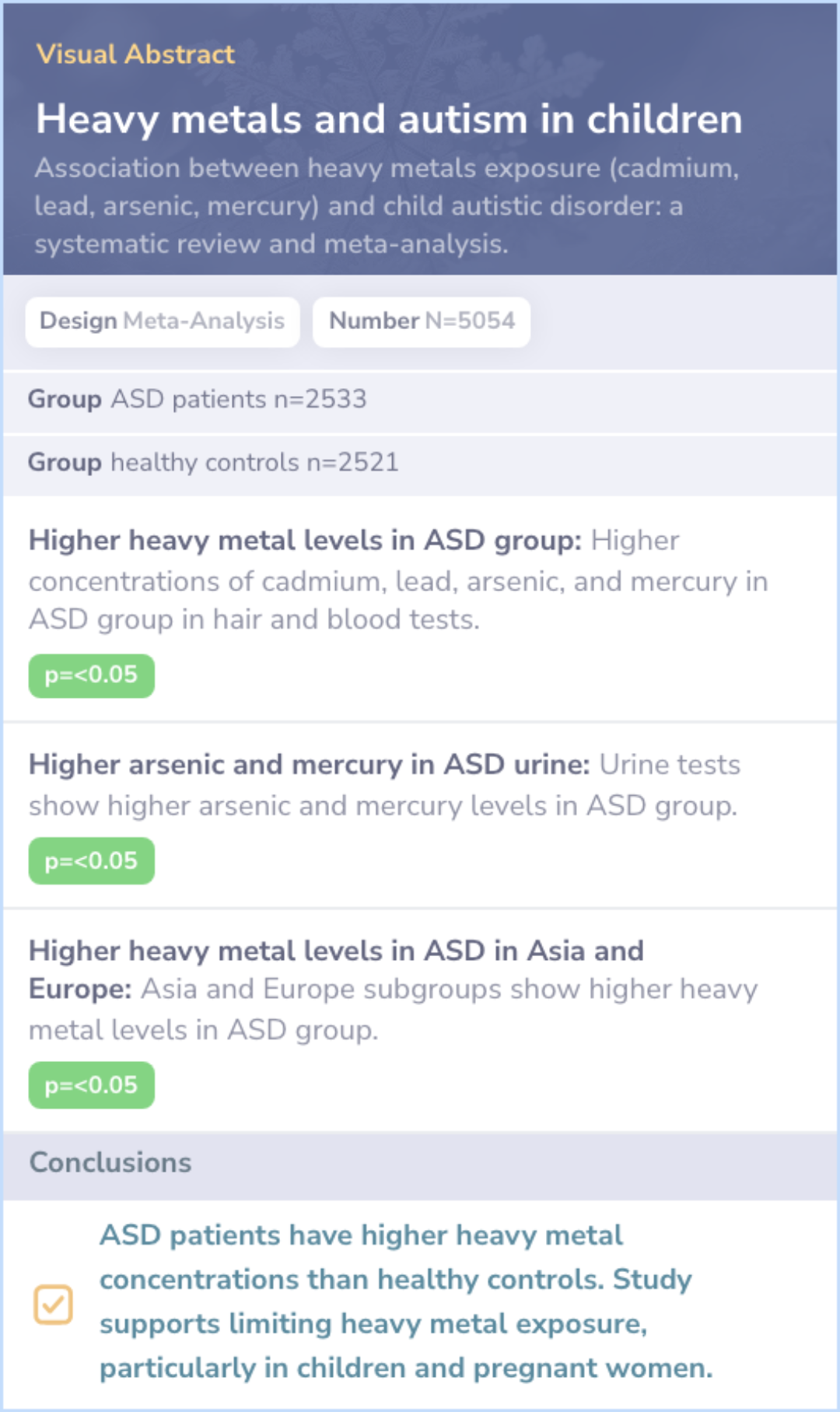
Literature Review
Lee et al, 2018
Core Insight:Both papers explore heavy metals' effects on ADHD but find different associations for specific metals.
What It Adds:
Lead Consistently Linked to ADHD: Both studies link lead exposure to ADHD but examine different symptoms.
Antimony and Cadmium: Comparison paper links antimony and cadmium to ADHD, unlike main paper.
